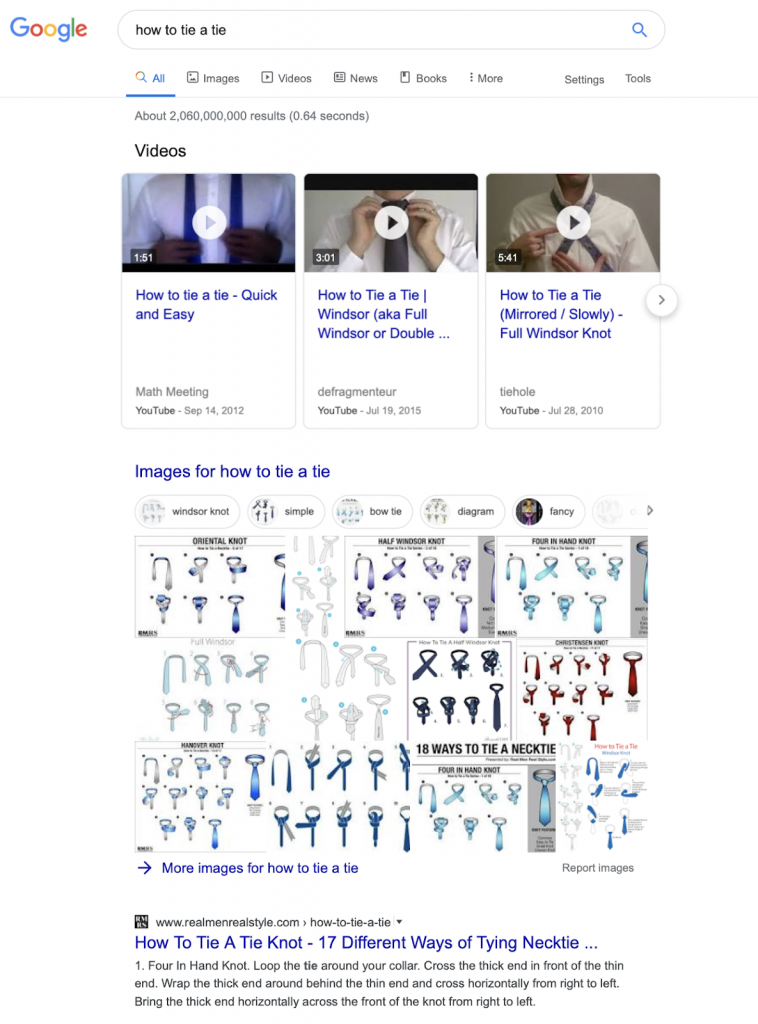
5 Tips for Finding the Right Keywords for Video Optimisation
Just like any other type of content optimisation, optimising videos for higher rankings also often starts with keyword research and selecting the right keywords that represent user intent.
However, researching keywords for video optimisation can be different and slightly more difficult than normal keyword research.
Here are a few different ways to help you find keywords for video optimisation.
1. YouTube suggestions
It is perhaps the easiest way to find great keyword ideas for your videos.
Use the YouTube search box to find relevant keywords with high potential. These keywords — because they are suggested based on the initial query a user types in — may also have a higher click-through rate.
You can also add an underscore before or after your query to find even more keywords. For instance, if you add an underscore before your query, YouTube will show all the keywords that searchers usually put before it.
With these tips, you can find plenty of relevant keywords directly from YouTube, without needing any third-party keyword research tool.
2. Keyword Tool
However, if you are interested in using a third-party tool to find even more keywords for your videos, keywordtool.io is one of the best options available. It is also free.
Just remember to select the YouTube search before pressing enter. Keywordtool.io will give plenty of new keywords and new ideas that you can use for optimising your videos.
3. Google Trends
Making videos requires a lot of effort and time. You want all your videos to do well and generate a decent amount of traffic for you. That’s why it is very important to know that you are not making videos on dying trends.
Google Trends can help you with that.
With Google Trend, you can instantly get a good idea of how your selected keyword or topic is expected to perform in the near future.
Whenever you shortlist keywords for videos, make sure to check them with Google Trends, and see if they are worth pursuing.
4. Using Google to identify video keywords
You must have noticed that for certain keyword phrases, Google also ranks and displays video results in the SERPs. Apart from YouTube (or whichever website you use for hosting your videos), this is another avenue to optimise your videos for search engines and acquire free organic traffic.
However, as we just mentioned, Google only ranks videos for certain keywords and keyword phrases. Such keywords are commonly referred to as “video keywords”.
How to find these keywords?
Unfortunately, there is no definite rule or tool for finding these video keywords. However, it is pretty easy to come up with these keywords and keyword phrases using common sense.
For example, “Sweet Child O’Mine music video” is a video keyword as the searcher — as indicated by her query — is looking for the video itself. Other than such obvious queries, “how-to” keywords also often trigger videos in the SERPs, e.g., “how to tie a tie.”
More videos in the SERPs indicate a more video-friendly keyword phrase.
Some of the other keywords that often trigger videos in the SERPs include reviews, tutorials, watch, view, videos, etc.
5. Competitor analysis
Just like competitor analysis in traditional SEO for blogs, you can also unearth some great keyword ideas by analyzing your competitors and their YouTube channels.
One excellent way of doing that is to install vidIQ Vision, a Google Chrome extension.
This nifty browser extension provides valuable information, stats, and key insights to help you formulate a solid keyword and video content strategy. For instance, you can quickly find a keyword and view its keyword score, level of competition, and other useful metrics before you decide to pursue it and make a video on it.
Second, you can also analyse videos that are ranked in the top three positions for popular keywords. With a tool like this, you can quickly find what tags those videos use. So you can also use the same tags and give your videos the best possible chance to topple them in the search results.
Conclusion
Video optimisation can be a tedious and time-consuming task. Including keywords in the title, tags, and descriptions is recommended. However, to do that, you must first find those keywords.
Use the tips mentioned in this article to find the right keywords that are more likely to produce the best possible results for your videos on YouTube and in Google Search.










